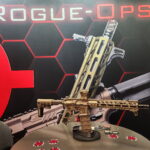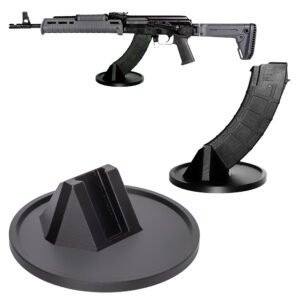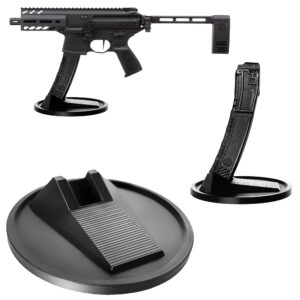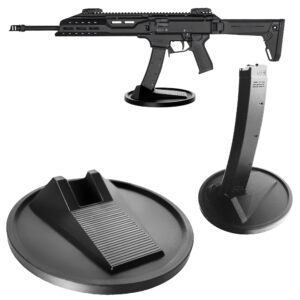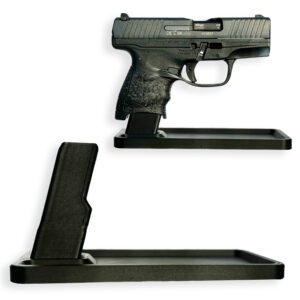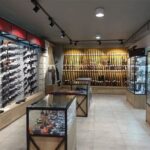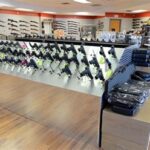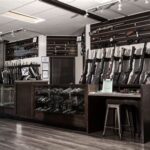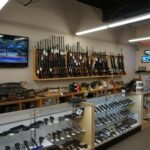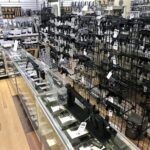Choosing the Right Ammunition for Your Gun
Navigating the expansive world of firearms and ammunition can be a daunting task, especially for those new to shooting. Ammunition is not just about sending a projectile downrange; it’s also about safety, accuracy, and functionality tailored to specific purposes. This comprehensive guide aims to clarify how to choose the right ammunition for your firearm, ensuring safety, optimal performance, and a satisfying shooting experience.
Understanding Ammunition Basics
Before diving into selection criteria, it’s vital to grasp some foundational knowledge about ammunition:
- Bullet: The projectile that gets fired from the firearm.
- Case: Typically made of brass, steel, or aluminum, it houses the primer, powder, and bullet.
- Primer: A small, sensitive compound that ignites when struck, igniting the powder.
- Powder: Once ignited by the primer, it produces gas that propels the bullet down the barrel.
Caliber and Chambering
The most critical aspect of selecting ammunition is ensuring it matches your firearm’s caliber and chambering:
- Caliber: Refers to the approximate diameter of the bullet or the inside of the firearm’s barrel. For instance, a .45 caliber bullet has a diameter of roughly 0.45 inches.
- Chambering: Indicates the specific cartridge for which the firearm is designed. For example, while 9mm Luger and 9mm Makarov both are 9mm in caliber, they are different chamberings and are not interchangeable.
Always refer to your firearm’s barrel, slide, or receiver, or consult the owner’s manual to determine the correct chambering.
Purpose-Based Selection
Different shooting activities require different types of ammunition:
- Target Shooting and Practice: Cost-effective, reliable rounds, typically full metal jackets, are suitable for training and practice.
- Self-Defense: Hollow-point or other expanding bullets are preferred due to their stopping power and reduced risk of over-penetration.
- Hunting: Depending on the game, soft-point, hollow-point, or other specific types might be suitable.
- Competitive Shooting: Shooters often prefer specially loaded ammunition for increased accuracy and performance.
Bullet Types and Their Applications
- Full Metal Jacket (FMJ): Ideal for target practice and general use.
- Hollow Point (HP): Expands upon impact, suitable for self-defense and hunting.
- Soft Point (SP): Offers a middle ground between FMJ and HP, used in hunting for controlled expansion.
- Ballistic Tip: A type of plastic-tipped hollow point, designed for accuracy and rapid expansion.
- Frangible: Breaks apart upon impact, reducing the risk of over-penetration. Useful in specific shooting environments or for shooting steel targets at close range.
Consider Your Gun’s Preferences
Some firearms, especially semi-automatics, can be finicky about the ammunition they cycle reliably:
- Feeding: The shape of the bullet can affect how smoothly it feeds into the chamber. Some guns might prefer round-nose (FMJ) bullets, while others might handle hollow points without issue.
- Recoil Sensitivity: Some firearms, particularly smaller, lightweight models, might be more sensitive to recoil, affecting their cycling with hotter loads.
Test various brands and types to determine what cycles most reliably in your firearm.
Brands and Quality Control
Not all ammunition is created equal:
- Reputable Brands: Companies like Federal, Winchester, Remington, and Hornady, among others, have a track record of quality control.
- Budget Options: While more affordable, some budget brands might not offer the same consistency or reliability.
- Reloaded or Remanufactured Ammunition: These can be cost-effective and suitable for practice, but ensure they’re sourced from a reputable reloader. They might not be recommended for self-defense due to potential variations in reliability.
External Factors
- Climate and Storage: If you’re in a humid environment, consider corrosion-resistant coated cases. Store ammunition in a cool, dry place.
- Local Regulations: Some regions might have restrictions on specific bullet types, especially for hunting. Always check local regulations.
Special Considerations for Older Guns
If you own vintage or heirloom firearms:
- Modern vs. Older Loadings: Some older firearms might not be designed to handle the pressures of modern ammunition.
- Corrosive Primers: Older ammunition might have corrosive primers, which necessitate thorough cleaning post-shooting to prevent barrel damage.
- Consult Experts: If in doubt about the right ammunition for an older firearm, consult experts or gunsmiths familiar with vintage guns.
Safety Above All
While experimenting with different ammunition types can be informative, always prioritize safety:
- Stick to Specified Chamberings: Never attempt to shoot ammunition not explicitly chambered for your firearm.
- Inspect Ammunition: Before loading, check for visible defects, corrosion, or abnormalities.
- Watch for Signs: If you experience frequent misfires, jams, or irregularities in performance, it might indicate an issue with the ammunition or a mismatch with the firearm.
Conclusion
Choosing the right ammunition for your firearm is a blend of understanding technical specifications, recognizing the intended purpose, and being aware of your firearm’s particular characteristics and preferences. With the vast array of options available in today’s market, shooters can tailor their choices to achieve specific goals, whether it’s accuracy, self-defense, or simply enjoying a day at the range. Always prioritize safety, and when in doubt, seek guidance from seasoned professionals or firearm experts. With the correct ammunition, your shooting experience will be both safe and rewarding.
Related
